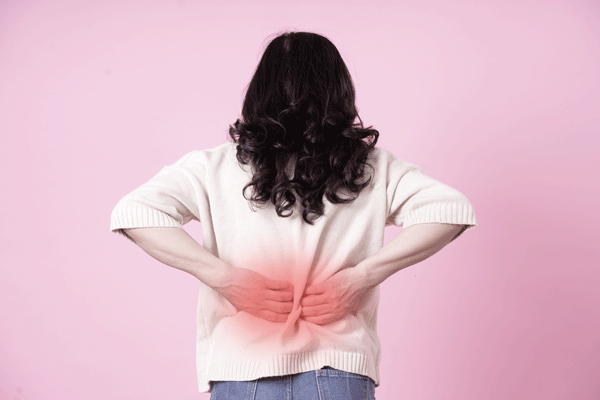Herniated (‘slipped’) disc
What is a herniated disc?
To understand what a herniated disc is, we need to first understand the structure of the spine. The spine consists of bones called vertebrae that are stacked on top of each other. The spinal column provides support for the body, allowing you to stand correctly, whilst at the same time protecting the spinal cord from injury. To further aid this, in between each vertebra there are protective pads of cartilage (connective tissue) called discs; these discs have a tough, fibrous outer case that contains a softer gel-like substance. This gel-like centre allows them to be both flexible and act like shock absorbers of the spine. They are therefore able to support heavy loads while still allowing a great deal of movement.
A slipped disc – known as a prolapsed or herniated disc – occurs when one of the discs is damaged and results in the gel inside bulging outwards through the outer wall of the disc.
This bulging of the disc may result in it pressing on the nerves as they exit the spinal cord. This can lead to the nerve becoming irritated which can cause back pain and neck pain, pain in the leg or pain in the arm as well as symptoms such as numbness, tingling or even muscle weakness. The pain is often made worse by coughing, sneezing or sitting down for prolonged periods of time.
What can cause this to happen?
It is not always clear what causes this to happen. However, slipped discs are more common as we get older. This is a result of our discs losing their water content as we age and so causing them to become less flexible and therefore more likely to rupture.
However, other factors can put increased pressure and strain on your spine and therefore your discs.
These include:
- bending awkwardly
- heavy or awkward lifting
- long periods of time spent sitting
- smoking
- weight bearing or high impact sports What can chiropractic treatment do? First of all it is important to properly diagnosis the problem, Treatment is only commenced after a full case history and physical examination has been undertaken. Sometimes it is necessary to be referred for an MRI scan, for a more detailed investigation of the spine and soft tissues. Once diagnosed the focus of treatment will be to lower pain levels and improve mobility. What can chiropractic treatment do? It is also a good idea to start a core exercise programme to help build spinal/core strength, stamina and endurance. This may be done through a home exercise programme or a group exercise class like Pilates. In the most severe cases, a small number of disc problems may require a corticosteriod injection or surgery and, if this is the case, I will refer you to the necessary place for help and follow up with you to ensure the best possible care.




